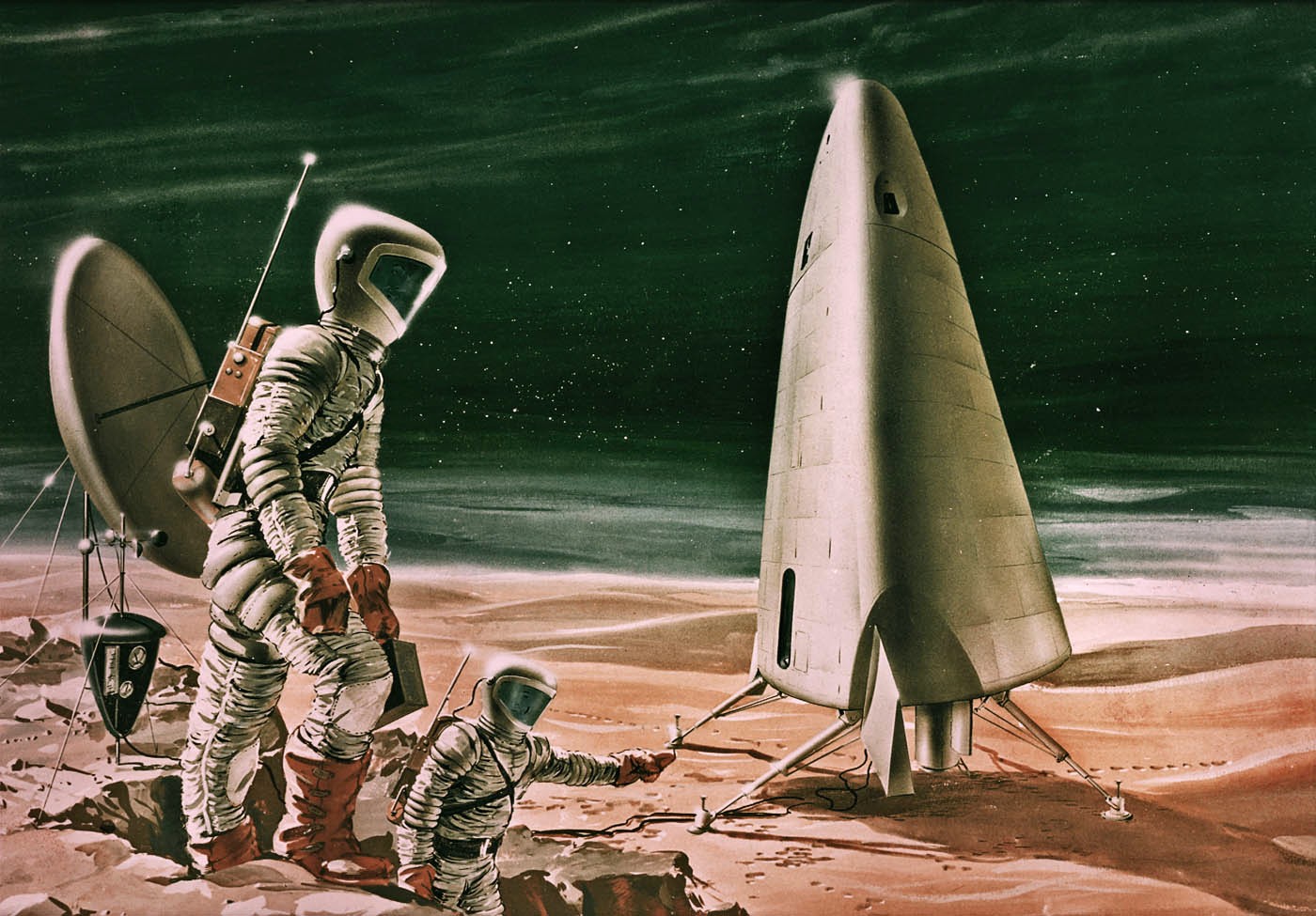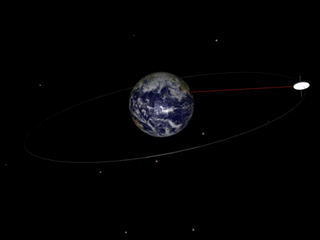|
Space Transportation System
The Space Transportation System (STS), also known internally to NASA as the Integrated Program Plan (IPP), was a proposed system of reusable crewed spacecraft, space vehicles envisioned in 1969 to support extended operations beyond the Apollo program (NASA appropriated the name for its Space Shuttle Program, the only component of the proposal to survive Congressional funding approval). The purpose of the system was two-fold: to reduce the cost of spaceflight by replacing the existing method of launching space capsule, capsules on expendable rockets with reusable spacecraft; and to support ambitious follow-on programs including permanent orbiting space stations around Earth and the Moon, and a human landing mission to Mars. In February 1969, President Richard Nixon appointed a Space Task Group headed by Vice President Spiro Agnew to recommend human space projects beyond Apollo. The group responded in September with the outline of the STS, and three different program levels of e ... [...More Info...] [...Related Items...] OR: [Wikipedia] [Google] [Baidu] |
NASA
The National Aeronautics and Space Administration (NASA ) is an independent agencies of the United States government, independent agency of the federal government of the United States, US federal government responsible for the United States's civil list of government space agencies, space program, aeronautics research and outer space, space research. National Aeronautics and Space Act, Established in 1958, it succeeded the National Advisory Committee for Aeronautics (NACA) to give the American space development effort a distinct civilian orientation, emphasizing peaceful applications in space science. It has since led most of America's space exploration programs, including Project Mercury, Project Gemini, the 1968–1972 Apollo program missions, the Skylab space station, and the Space Shuttle. Currently, NASA supports the International Space Station (ISS) along with the Commercial Crew Program and oversees the development of the Orion (spacecraft), Orion spacecraft and the Sp ... [...More Info...] [...Related Items...] OR: [Wikipedia] [Google] [Baidu] |
Space Task Group
The Space Task Group was a working group of NASA engineers created in 1958, tasked with managing America's human spaceflight programs. Headed by Robert Gilruth and based at the Langley Research Center in Hampton, Virginia, it managed Project Mercury and follow-on plans. After President John F. Kennedy set the goal in 1961 for the Apollo Program to land a man on the Moon and bring him back safely to Earth, NASA decided a much larger organization and a new facility was required to perform the Task Group's function, and it was transformed into the Manned Spacecraft Center (now the Lyndon B. Johnson Space Center), located in Houston, Texas. In later years, the term ''Space Task Group'' was ambiguously reused to refer to an ''ad hoc'' committee appointed by the President to recommend human spaceflight programs, usually chaired by the Vice President. For instance, President Richard Nixon appointed such a group in February 1969 to outline a post-Apollo spaceflight strategy, chaired b ... [...More Info...] [...Related Items...] OR: [Wikipedia] [Google] [Baidu] |
Apollo 11
Apollo 11 was a spaceflight conducted from July 16 to 24, 1969, by the United States and launched by NASA. It marked the first time that humans Moon landing, landed on the Moon. Commander Neil Armstrong and Lunar Module pilot Buzz Aldrin landed the Lunar Module Eagle, Lunar Module ''Eagle'' on July 20, 1969, at 20:17 Coordinated Universal Time, UTC, and Armstrong became the first person to step onto the Moon's surface six hours and 39 minutes later, on July 21 at 02:56 UTC. Aldrin joined him 19 minutes later, and they spent about two and a quarter hours together exploring the site they had named Tranquility Base upon landing. Armstrong and Aldrin collected of lunar material to bring back to Earth as pilot Michael Collins (astronaut), Michael Collins flew the Command Module Columbia, Command Module ''Columbia'' in lunar orbit, and were on the Moon's surface for 21 hours, 36 minutes, before lifting off to rejoin ''Columbia''. Apollo 11 was launched by a Saturn V rocket from ... [...More Info...] [...Related Items...] OR: [Wikipedia] [Google] [Baidu] |
Thomas O
Thomas may refer to: People * List of people with given name Thomas * Thomas (name) * Thomas (surname) * Saint Thomas (other) * Thomas Aquinas (1225–1274) Italian Dominican friar, philosopher, and Doctor of the Church * Thomas the Apostle * Thomas (bishop of the East Angles) (fl. 640s–650s), medieval Bishop of the East Angles * Thomas (Archdeacon of Barnstaple) (fl. 1203), Archdeacon of Barnstaple * Thomas, Count of Perche (1195–1217), Count of Perche * Thomas (bishop of Finland) (1248), first known Bishop of Finland * Thomas, Earl of Mar (1330–1377), 14th-century Earl, Aberdeen, Scotland Geography Places in the United States * Thomas, Idaho * Thomas, Illinois * Thomas, Oklahoma * Thomas, Oregon * Thomas, South Dakota * Thomas, Virginia * Thomas, Washington * Thomas, West Virginia * Thomas County (other) * Thomas Township (other) Elsewhere * Thomas Glacier (Greenland) Arts and entertainment * ''Thomas'' (Burton novel), a 196 ... [...More Info...] [...Related Items...] OR: [Wikipedia] [Google] [Baidu] |
Mars Excursion Module
The Mars Excursion Module (MEM) was a spacecraft proposed by NASA in the 1960s for use in a human mission to Mars, and this can refer to any number of studies by corporations and spaceflight centers for Mars landers. However, primarily a MEM referred to a combination of a Manned Mars lander, short-stay surface habitat, and Mars ascent stage. Variations on a MEM included spacecraft designs like an uncrewed Mars surface cargo delivery, and there was a MEM lander that combined a communications center, living habitat, and laboratory. A MEM formed part of Mars orbit rendezvous (MOR) and flyby-rendezvous mission profiles studied at NASA's Manned Spacecraft Center in the 1960s. A Mars Excursion Module would have been a combination of a Mars lander, short-stay surface habitat, and ascent vehicle; the ascent stage performed the rendezvous. One design for a MEM would have been used for a 40-day stay on the Martian surface in the flyby-rendezvous mission profile or for a 10- to 40-day stay in ... [...More Info...] [...Related Items...] OR: [Wikipedia] [Google] [Baidu] |
Heavy Lift Launch Vehicle
A heavy-lift launch vehicle (HLV) is an orbital launch vehicle capable of lifting payloads between (by NASA classification) or between (by Russian classification) into low Earth orbit (LEO).50t payloads" Heavy-lift launch vehicles often carry payloads into higher-energy orbits, such as geosynchronous transfer orbit (GTO) or heliocentric orbit (HCO). An HLV is between a medium-lift launch vehicle and a super heavy-lift launch vehicle. History and design Government The first heavy-lift launch vehicles in the 1960s included the US Saturn IB and the Soviet Proton. Saturn IB was designed to carry the Apollo spacecraft into orbit and had increased engine thrust and a redesigned second stage from its predecessor. Proton was originally designed to be a large intercontinental ballistic missile (ICBM). Russia still operates variants of the Proton , although it is expected to be phased out in favor of the Angara A5. NASA introduced the Space Shuttle as the first partially reusable l ... [...More Info...] [...Related Items...] OR: [Wikipedia] [Google] [Baidu] |
Saturn V
The Saturn V is a retired American super heavy-lift launch vehicle developed by NASA under the Apollo program for human exploration of the Moon. The rocket was human-rated, had multistage rocket, three stages, and was powered by liquid-propellant rocket, liquid fuel. Flown from 1967 to 1973, it was used for nine crewed flights to the Moon, and to launch Skylab, the first American space station. the Saturn V remains the only launch vehicle to have carried humans beyond low Earth orbit (LEO). The Saturn V holds the record for the largest payload capacity to low Earth orbit, , which included unburned propellant needed to send the Apollo command and service module and Apollo Lunar Module, Lunar Module to the Moon. The largest production model of the Saturn (rocket family), Saturn family of rockets, the Saturn V was designed under the direction of Wernher von Braun at the Marshall Space Flight Center in Huntsville, Alabama; the lead contractors for construction of the rocket were ... [...More Info...] [...Related Items...] OR: [Wikipedia] [Google] [Baidu] |
Propellant Depot
An orbital propellant depot is a cache of propellant that is placed in orbit around Earth or another body to allow spacecraft or the transfer stage of the spacecraft to be fueled in space. It is one of the types of space resource depots that have been proposed for enabling infrastructure-based space exploration. Many depot concepts exist depending on the type of fuel to be supplied, location, or type of depot which may also include a propellant tanker that delivers a single load to a spacecraft at a specified orbital location and then departs. In-space fuel depots are not necessarily located near or at a space station. Potential users of in-orbit refueling and storage facilities include space agencies, defense ministries and communications satellite or other commercial companies. Satellite servicing depots would extend the lifetime of satellites that have nearly consumed their orbital maneuvering fuel and are likely placed in a geosynchronous orbit. The spacecraft would conduc ... [...More Info...] [...Related Items...] OR: [Wikipedia] [Google] [Baidu] |
Multistage Rocket
A multistage rocket or step rocket is a launch vehicle that uses two or more rocket ''stages'', each of which contains its own engines and propellant. A ''tandem'' or ''serial'' stage is mounted on top of another stage; a ''parallel'' stage is attached alongside another stage. The result is effectively two or more rockets stacked on top of or attached next to each other. Two-stage rockets are quite common, but rockets with as many as five separate stages have been successfully launched. By jettisoning stages when they run out of propellant, the mass of the remaining rocket is decreased. Each successive stage can also be optimized for its specific operating conditions, such as decreased atmospheric pressure at higher altitudes. This ''staging'' allows the thrust of the remaining stages to more easily accelerate the rocket to its final velocity and height. In serial or tandem staging schemes, the first stage is at the bottom and is usually the largest, the second stage and subse ... [...More Info...] [...Related Items...] OR: [Wikipedia] [Google] [Baidu] |
NERVA
Nerva (; born Marcus Cocceius Nerva; 8 November 30 – 27 January 98) was a Roman emperor from 96 to 98. Nerva became emperor when aged almost 66, after a lifetime of imperial service under Nero and the succeeding rulers of the Flavian dynasty. Under Nero, he was a member of the imperial entourage and played a vital part in exposing the Pisonian conspiracy of 65. Later, as a loyalist to the Flavians, he attained Roman consul, consulships in 71 and 90 during the reigns of Vespasian and Domitian, respectively. On 18 September 96, Domitian was assassinated in a palace conspiracy involving members of the Praetorian Guard and several of his freedman, freedmen. On the same day, Nerva was declared emperor by the Roman Senate. As the new ruler of the Roman Empire, he vowed to restore liberties which had been curtailed during the autocratic government of Domitian. Nerva's brief reign was marred by financial difficulties and his inability to assert his authority over the Roman army. A r ... [...More Info...] [...Related Items...] OR: [Wikipedia] [Google] [Baidu] |
Nuclear Thermal Rocket
A nuclear thermal rocket (NTR) is a type of thermal rocket where the heat from a nuclear reaction replaces the chemical energy of the rocket propellant, propellants in a chemical rocket. In an NTR, a working fluid, usually liquid hydrogen, is heated to a high temperature in a nuclear reactor and then expands through a rocket engine nozzle, rocket nozzle to create thrust. The external nuclear heat source theoretically allows a higher effective exhaust velocity and is expected to double or triple payload capacity compared to chemical propellants that store energy internally. NTRs have been proposed as a spacecraft propulsion technology, with the earliest ground tests occurring in 1955. The United States maintained an NTR development program through 1973 when it was shut down for various reasons, including to focus on Space Shuttle development. Although more than ten reactors of varying power output have been built and tested, , no nuclear thermal rocket has flown. Whereas all ea ... [...More Info...] [...Related Items...] OR: [Wikipedia] [Google] [Baidu] |
Geosynchronous Orbit
A geosynchronous orbit (sometimes abbreviated GSO) is an Earth-centered orbit with an orbital period that matches Earth's rotation on its axis, 23 hours, 56 minutes, and 4 seconds (one sidereal day). The synchronization of rotation and orbital period means that, for an observer on Earth's surface, an object in geosynchronous orbit returns to exactly the same position in the sky after a period of one sidereal day. Over the course of a day, the object's position in the sky may remain still or trace out a path, typically in a figure-8 form, whose precise characteristics depend on the orbit's inclination and eccentricity. A circular geosynchronous orbit has a constant altitude of . A special case of geosynchronous orbit is the geostationary orbit (often abbreviated ''GEO''), which is a circular geosynchronous orbit in Earth's equatorial plane with both inclination and eccentricity equal to 0. A satellite in a geostationary orbit remains in the same position in the sky to observers ... [...More Info...] [...Related Items...] OR: [Wikipedia] [Google] [Baidu] |








